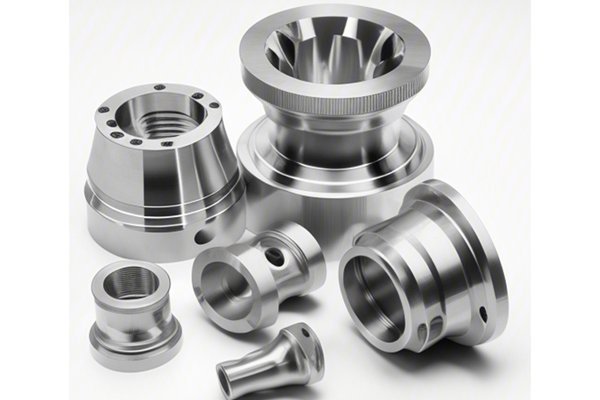Ever considered that the material you choose for machining can make or break the efficiency of your manufacturing process? Studies indicate that up to 20% of machining costs can be attributed solely to material selection, impacting both time and quality. As industries push toward more complex geometries and higher precision in their components, understanding how to select materials effectively for five-axis machining becomes critical.
Understanding Five-Axis Machining
What is Five-Axis Machining?
Five-axis machining refers to the ability of a manufacturing tool to move along five different axes simultaneously. This capability allows for intricate geometries that are harder to produce using traditional three-axis machining. The advantages of five-axis machining come into play when working with complex shapes, especially in industries like aerospace, automotive, and medical device manufacturing.
The Importance of Material Selection
In five-axis machining, material selection is crucial as it affects everything from machining speed to tool wear and ultimately, the quality of the finished product. Choosing an inappropriate material can lead to increased costs, elongated lead times, and poor component quality.
Factors to Consider When Selecting Materials
When selecting materials for five-axis machining, it’s important to consider several factors to maximize efficiency. Here’s a detailed breakdown:
Hardness
The hardness of a material influences how well it can withstand machining forces. Softer materials may wear tools quickly, while harder materials may require higher amounts of force to reshape.
Toughness
Toughness indicates a material’s ability to absorb energy and deform without breaking. Choosing tough materials can help avoid fracture during the machining process.
Ductility
Ductile materials can be easily shaped, which is beneficial for complex designs. However, they may also cause problems such as deformation if not handled correctly.
Machinability
Machinability refers to how easily a material can be machined to meet specified dimensions and surface finishes. Some materials, like aluminum, are deemed highly machinable, while others, such as titanium, require specialized tools and cutting conditions.
Chip Formation
The type of chip that a material forms during machining can impact efficiency. Ideally, materials should produce manageable, short chips that do not interfere with cutting operations.
Cutting Force
Calculating the cutting force required for a material can help determine the appropriate machine settings, tool paths, and tools to use.
Thermal Expansion
Materials expand when heated and contract when cooled. Understanding how a material’s thermal properties affect its stability during machining is essential, as it can result in dimensional inaccuracies if not properly controlled.
Temperature Resistance
Some materials can withstand higher temperatures, making them suitable for extended machining sessions without degradation in quality or performance.
Material Costs
Cost pressures are always present in machining processes. Higher quality materials often translate to better efficiency but also come with increased price tags. Analyzing the trade-off between cost and performance is crucial in material selection.
Availability
Ensure that chosen materials are readily available in the sizes and quantities needed. Supply chain disruptions can lead to delays, affecting deadlines and budgets.
Choosing materials that comply with industry standards and regulations—such as REACH or RoHS—has become essential. Furthermore, selecting eco-friendly or recyclable materials can enhance a company’s reputation and reduce its environmental footprint.
Material Options for Five-Axis Machining
To illustrate the factors discussed, let’s explore some materials commonly used in five-axis machining:

Best Practices for Material Selection in Five-Axis Machining
Prototyping
Before committing fully to a material for production, creating a prototype can be invaluable. Prototyping allows manufacturers to identify potential issues tied to machining characteristics and adjust processes accordingly.
Consult with Suppliers
Collaborating with material suppliers can provide insights into the best materials for specific applications, including alternative options that may improve both performance and cost.
Leverage Technology
Adopting simulation technologies can help visualize how different materials respond to machining. This approach provides a data-driven methodology for making informed material choices.
Continuous Learning
Staying updated on advancements in material science—like the development of new alloys or cutting-edge composites—can provide competitive advantages. Engage in regular training and workshops focusing on the latest trends in materials that relate to five-axis machining.
Material selection is a cornerstone of successful five-axis machining workflows. By carefully considering factors like machinability, thermal properties, and environmental compliance, manufacturers can greatly enhance not only the efficiency but also the effectiveness of their machining processes.
The potential cost savings and quality improvements related to choosing the right materials cannot be overstated. As industries demand more intricate designs and higher production rates, adapting to these changes through strategic material selection becomes imperative.
For manufacturers looking to remain competitive, investing time in understanding material properties, industry trends, and technological advances is crucial. This effort not only results in quality outputs but also lays the foundation for innovation and growth in machining practices.
Final Thoughts
In a rapidly evolving manufacturing landscape, the knowledge of selecting the right materials for five-axis machining is not just a beneficial skill—it’s essential. The efficiency gained through optimal material choice can lead to significant competitive advantages, making this blog a valuable resource worth considering. By empowering yourself with this knowledge, you set the groundwork for future success in your machining endeavors.






